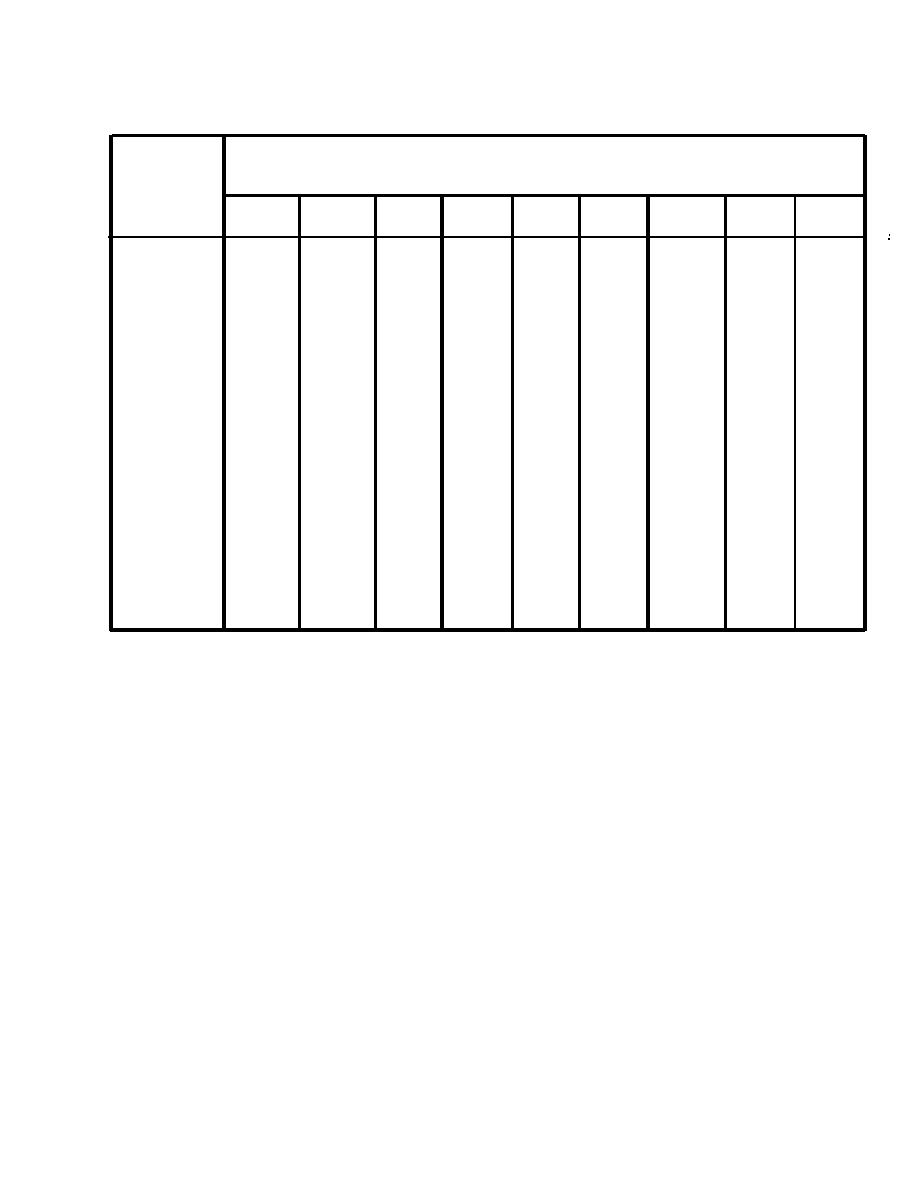
TM 5-805-4/AFJMAN 32-1090
Table 3-1. Reduction of SPL in (dB) in Going from Normalized 3-ft.. Distance and 800-ft.2 Room Constant to Any Other Distance
and Room Constant.
Room
Distance "D" (in ft.) from Equipment
Constant
"R"
80
60
40
30
(ft.2)
20
15
10
5
3
-4
-4
-4
-4
-4
100
-5
-4
-4
-4
-1
-1
-1
-1
-1
-1
-2
-1
-3
200
320
-2
0
0
0
0
0
0
0
0
500
-1
1
3
3
3
4
2
4
4
700
0
2
4
4
5
5
6
6
6
1000
1
3
5
6
7
7
8
0
0
2000
1
4
7
0
9
9
10
10
10
3200
2
5
0
9
10
11
12
12
12
5000
2
6
9
11
12
13
14
14
15
13
14
15
15
16
2
6
10
12
7000
10000
2
7
11
13
14
15
16
17
10
20000
2
7
12
14
16
18
19
21
22
Infinite
2
7
13
I
16
19
22
25
20
31
Negative value of reduction means an Increase in sound level.
Note:
b. Sound absorption coefficients. For most sur-
basic room dimensions are required but it is not
faces and materials, the sound absorption coeffi-
necessary to have made all the decisions on side
cients vary with frequency; hence the Room Con-
wall, floor, and ceiling materials. This simplifica-
stant must be calculated for all frequencies of
tion yields a less accurate estimate than does the
interest. Even room surfaces that are not normally
more detailed procedure, but it permits rapid
considered absorptive have small amounts of ab-
estimates of the Room Constant with gross, but
sorption. Table 5-1 gives the published sound
nonspecific, changes in room materials and sound
absorption coefficients of typical building materi-
absorption applications. Then, when a favored
als. Usually sound absorption coefficients are not
condition is found, detailed calculations can be
measured in the 31, 63 and 8,000 Hz frequencies.
made with equation 3-1.
d. Use of figure 3-2. Figure 3-2 gives a broad
Where the data at these frequencies are not
available use 40% of the value of the 125 Hz for
relationship between the volume of a typically
shaped room and the Room Constant as a function
the 31 Hz band, 70% of the 125 Hz value for the
63 Hz band and 80% of the 4,000 value for the
of the percentage of room area that is covered by
8,000 Hz octave band. Values of sound absorption
sound absorption material. Room area means the
coefficients for specialized acoustical materials
total interior surface area of floor, ceiling, and all
side walls. The Room Constant values obtained
must be obtained from the manufacturer.
from this chart strictly apply at 1000 Hz, but in
c. Estimation of room constant. In the early
this simplified procedure are considered applicable
stages of a design, some of the details of a room
for the 2000- through 8000-Hz bands as well.
may not be finally determined, yet it may be
e. Use of table 3-3, part A. Sound absorption
necessary to proceed with certain portions of the
materials are less effective at low frequency (at
design. An approximation of the Room Constant
and below 500 Hz) than at high frequency (at and
can be made using figure 3-2 and table 3-4. The
3-3


 Previous Page
Previous Page
